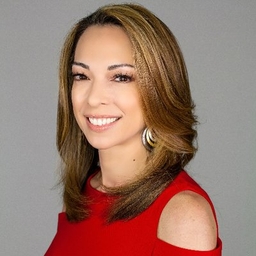Report on Gender Inequality in Sports and Alignment with Sustainable Development Goals
A recent address by the UN High Commissioner for Human Rights, Volker Türk, has underscored the urgent need for UN member states and sports organizations to address persistent gender inequality in sports. This report analyzes the key issues raised, framing them within the context of the United Nations Sustainable Development Goals (SDGs), particularly SDG 5 (Gender Equality), SDG 8 (Decent Work and Economic Growth), SDG 10 (Reduced Inequalities), and SDG 16 (Peace, Justice and Strong Institutions).
Key Findings on Gender Disparities in Athletics
Economic Inequality and SDG 8: Decent Work and Economic Growth
Significant pay disparities represent a fundamental barrier to professionalizing women’s sports and achieving SDG 8, which calls for equal pay for work of equal value. The current economic landscape in sports directly contravenes this principle.
- Pay Gap Statistics: Male football players earn an average salary of $1.8 million, while female counterparts in top-tier clubs earn between $10,900 and $24,000 annually.
- International Findings: A 2024 study by the Equal Pay International Coalition (EPIC) found that male athletes earn approximately 21 times more in playing salaries than female athletes.
- National Disparities: The Cricket Association of Nepal (CAN) revealed a significant salary gap in its 2024 national team contracts, highlighting the global nature of this issue.
Under-representation in Leadership and SDG 5: Gender Equality
The lack of female representation in governance and leadership roles is a critical issue that perpetuates systemic inequality, hindering progress towards SDG 5, which targets women’s full participation and equal opportunities for leadership at all levels of decision-making.
- Governance Deficit: Women are significantly under-represented in leadership positions within sports clubs, federations, and international governing bodies.
- Impact on Decision-Making: This lack of representation is cited as a primary reason for the persistence of the gender pay gap and unequal allocation of resources, including media coverage.
Discrimination, Abuse, and SDG 10: Reduced Inequalities
Discrimination and abuse create hostile environments that impede the progress of female athletes, directly challenging the aims of SDG 10, which seeks to reduce inequalities and promote the inclusion of all, irrespective of race or gender.
- Targeted Discrimination: Athletes of African descent are noted as being most affected by discriminatory narratives, racism, and hate speech, both online and offline.
- Violence and Harassment: The need to prevent and address violence and harassment against female athletes is a critical human rights concern.
- Barriers to Progress: These discriminatory practices constitute significant barriers that must be dismantled to foster a diverse and inclusive sporting world.
Recommendations and Responsibilities for Achieving SDGs
State-Level Actions for SDG 5 and SDG 16
Member states hold the primary responsibility for creating a legal and social environment conducive to gender equality in sports, thereby advancing SDG 5 and building the strong, inclusive institutions central to SDG 16.
- Adopt Anti-Discrimination Legislation: States must enact and enforce robust anti-discrimination laws specifically tailored to the sports sector.
- Implement Protective Measures: Proactive measures are required to prevent violence and harassment against women and girls in sports.
- Ensure Accountability: States must guarantee that all incidents of abuse, harassment, and discrimination are thoroughly investigated and perpetrators are held accountable.
Corporate Responsibility and Multi-Stakeholder Partnerships (SDG 17)
Sports organizations, including event organizers, have a crucial role and responsibility to promote equality, working in partnership with states as envisioned by SDG 17 (Partnerships for the Goals).
- Align with UN Principles: Corporations and sports bodies must align their operations with the UN Guiding Principles on Business and Human Rights.
- Conduct Human Rights Due Diligence: Organizations are required to assess how their activities impact women’s rights and implement strategies to mitigate risks and negative impacts.
Conclusion: Sports as a Catalyst for Sustainable Development
Achieving an equitable sports world is a powerful catalyst for wider social and economic change. By leveling the playing field, the global community can harness the power of sport to promote its intrinsic values and provide equal opportunities for women and girls. This effort is not merely about athletics but is a fundamental component of advancing the 2030 Agenda for Sustainable Development, ensuring gender equality, decent work, and reduced inequalities for all.
1. Which SDGs are addressed or connected to the issues highlighted in the article?
-
SDG 5: Gender Equality
The article’s central theme is the gender gap in sports, focusing on issues like pay disparities, lack of representation in leadership, and discrimination against female athletes. It directly calls for leveling the playing field and ensuring women enjoy the same rights as men in the sports world.
-
SDG 8: Decent Work and Economic Growth
The significant pay gap between male and female athletes is a key issue discussed. The article highlights that female football players earn a fraction of what their male counterparts do, which impacts their careers. This connects to the goal of achieving equal pay for work of equal value.
-
SDG 10: Reduced Inequalities
The article addresses inequalities based on gender and race. It points out the disparity in pay, opportunities, and media coverage between men and women, and specifically mentions that athletes of African descent are most affected by discrimination and racist narratives, which are barriers to their progress.
-
SDG 16: Peace, Justice and Strong Institutions
The UN Commissioner calls on member states to adopt and enforce anti-discrimination policies and laws. The article also mentions the need for measures to prevent violence and harassment against female athletes and to ensure incidents are investigated, which relates to building just and effective institutions that protect human rights.
-
SDG 17: Partnerships for the Goals
The article emphasizes that responsibility for promoting equality in sports lies with both states and sports organizations. It calls for these entities to work together and for businesses to align their operations with the UN Guiding Principles on Business and Human Rights, highlighting the need for multi-stakeholder partnerships to achieve these goals.
2. What specific targets under those SDGs can be identified based on the article’s content?
-
SDG 5: Gender Equality
- Target 5.1: End all forms of discrimination against all women and girls everywhere. The article explicitly calls for dismantling discriminatory practices that hinder women’s progress in sports and for adopting anti-discrimination policies.
- Target 5.5: Ensure women’s full and effective participation and equal opportunities for leadership at all levels of decision-making. The article identifies the “under-representation of women in sports governance structures” and the lack of women in “sports leadership roles” as a key problem.
- Target 5.c: Adopt and strengthen sound policies and enforceable legislation for the promotion of gender equality. The UN Commissioner’s call for member states to adopt “anti-discrimination policies and laws” directly aligns with this target.
-
SDG 8: Decent Work and Economic Growth
- Target 8.5: Achieve full and productive employment and decent work for all women and men… and equal pay for work of equal value. The article’s extensive focus on the “considerable pay gap” between male and female athletes, citing specific salary differences, directly relates to this target.
-
SDG 10: Reduced Inequalities
- Target 10.2: Empower and promote the social, economic and political inclusion of all, irrespective of sex, race, ethnicity. The article advocates for a sports world that “embraces women’s diversity” and highlights that “athletes of African descent” are most affected by discrimination, calling for their inclusion and equal treatment.
- Target 10.3: Ensure equal opportunity and reduce inequalities of outcome, including by eliminating discriminatory laws, policies and practices. The call to dismantle “barriers that hinder women’s progress in sports” and create an equitable world with “equal opportunities for women and girls” supports this target.
-
SDG 16: Peace, Justice and Strong Institutions
- Target 16.1: Significantly reduce all forms of violence. The call for states to “implement measures that not only prevent violence and harassment against female athletes” is a direct reference to this target.
- Target 16.b: Promote and enforce non-discriminatory laws and policies for sustainable development. The Commissioner’s statement that member states are responsible for “ensuring equality between men and women in sports, which requires adopting anti-discrimination policies and laws” aligns perfectly with this target.
-
SDG 17: Partnerships for the Goals
- Target 17.17: Encourage and promote effective public, public-private and civil society partnerships. The article states that “sports organizations… play a significant role in promoting equality in sports alongside states,” implying a need for partnership between public (states) and private/civil society (sports organizations) entities.
3. Are there any indicators mentioned or implied in the article that can be used to measure progress towards the identified targets?
-
Indicator for Target 8.5 (Equal Pay)
The article provides specific data points that can be used as indicators for measuring the gender pay gap. It states that “the average female football player earns between $10,900 and $24,000 per year in top-tier clubs, male football players earn an average salary of $1.8 million.” It also cites a report that “male athletes earn approximately 21 times more in playing salaries than their female counterparts.” These figures serve as direct quantitative indicators of the pay disparity (related to official indicator 8.5.1: Average hourly earnings of female and male employees).
-
Indicator for Target 5.5 (Women in Leadership)
The article implies the use of an indicator by stating there is a “lack [of] representation in sports leadership roles” and “under-representation of women in sports governance structures.” Progress could be measured by the proportion of women in leadership positions within clubs, sports federations, and governing bodies (related to official indicator 5.5.2: Proportion of women in managerial positions).
-
Indicator for Target 5.1 & 16.b (Non-discrimination)
The article implies an indicator by referencing the need for states to adopt “anti-discrimination policies and laws.” The existence and enforcement of such legal frameworks can be used as an indicator to measure progress (related to official indicator 5.1.1: Whether or not legal frameworks are in place to promote, enforce and monitor equality and non-discrimination on the basis of sex).
-
Indicator for Target 16.1 (Violence and Harassment)
The article mentions the need to prevent “violence and harassment against female athletes” and investigate any incidents. The number of reported and investigated incidents of violence, harassment, and abuse (both online and offline) against female athletes could serve as an indicator to measure the effectiveness of preventive measures (related to official indicator 16.1.3: Proportion of population subjected to physical, psychological or sexual violence).
4. Table of SDGs, Targets, and Indicators
| SDGs | Targets | Indicators Identified in the Article |
|---|---|---|
| SDG 5: Gender Equality | Target 5.1: End all forms of discrimination against women. Target 5.5: Ensure women’s full participation and equal opportunities for leadership. |
Proportion of women in leadership roles within sports federations and governing bodies. Existence of anti-discrimination laws and policies in sports. |
| SDG 8: Decent Work and Economic Growth | Target 8.5: Achieve equal pay for work of equal value. | The wage gap between male and female athletes (e.g., male athletes earning 21 times more; specific salary comparisons in football). |
| SDG 10: Reduced Inequalities | Target 10.2: Empower and promote the social, economic and political inclusion of all. Target 10.3: Ensure equal opportunity and reduce inequalities of outcome. |
Disparities in media coverage and opportunities for female athletes, particularly those of African descent. |
| SDG 16: Peace, Justice and Strong Institutions | Target 16.1: Significantly reduce all forms of violence. Target 16.b: Promote and enforce non-discriminatory laws and policies. |
Number of reported and investigated incidents of violence, harassment, and hate speech against female athletes. Adoption and enforcement of anti-discrimination laws by member states. |
| SDG 17: Partnerships for the Goals | Target 17.17: Encourage and promote effective public, public-private and civil society partnerships. | Collaboration between states and sports organizations to promote equality. Alignment of sports organizations’ operations with the UN Guiding Principles on Business and Human Rights. |
Source: jurist.org







